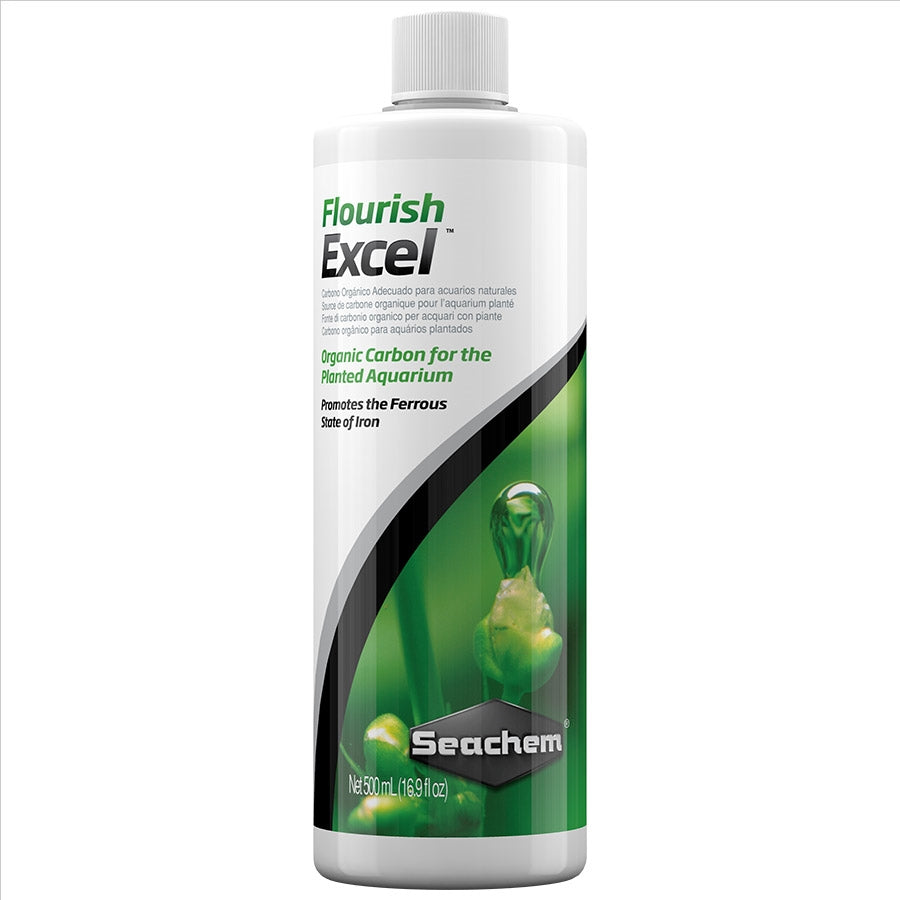Seachem Flourish Excel Plant Fertiliser. Flourish Excel is a source of bioavailable organic carbon. All plants require a source of carbon. This is typically obtained from CO2, but, may also be derived from simple organic compounds.
Flourish Excel
Flourish Excel is a source of bioavailable organic carbon. All plants require a source of carbon.
This is typically obtained from CO2, but, may also be derived from simple organic compounds (such as photosynthetic intermediates).
The use of either CO2 injection or Flourish Excel does not necessarily negate the use of the other.
Because the processes of producing photosynthetic intermediates and building onto them occur simultaneously, one can derive a substantial benefit with the use of Flourish Excel either alone or in conjunction with CO2 .
The combination is particularly ideal for situations when continuing to add CO2 could result in dangerously low pH levels.
Flourish Excel also has iron reducing properties which promote the ferrous state of iron (Fe+2), which is more easily utilized by plants than ferric iron (Fe+3).
Why It's Different
The reason plants need CO2 is to produce longer chain carbon compounds also known as photosynthetic intermediates.
Photosynthetic intermediates includes compounds such as ribulose 1,5-bisphosphate, and 2-carboxy-3-keto-D-arabinitol 1,5 bisphosphate.
Although the names are complicated, the structures are quite simple (5 carbon chains). Flourish Excel does not contain these specific compounds per se, but one that is quite similar.
By dosing with Flourish Excel you bypass the involvement of CO2 and introduce the already finished, structurally similar compounds.
It is in its structural similarity that Flourish Excel is able to be utilized in the carbon chain building process of photosynthesis.
Simple chemical or enzymatic steps can easily convert it to any one to any one of the above named compounds (or a variety of others).




